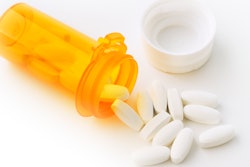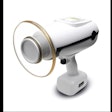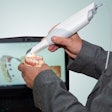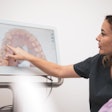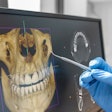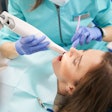In patients with gastroesophageal reflux disease (GERD), 3D-printed denture base resin (DBR) tooth combinations may be more successful than CAD/CAM-milled resin. This study was recently published in Scientific Reports.
Furthermore, 3D-printing methods may be suitable for patients with GERD due to their strong adhesive bonding even when exposed to acid, the authors wrote.
“The CAD/CAM milled method showed significantly lower bond strength, while the 3D printed group showed the highest bond strength,” wrote the authors, Burcu Kizilirmak and Ali Rıza Tunçdemİr of Necmettin Erbakan University in Turkey (Sci Rep, May 13, 2025, Vol. 15:1, 16648).
To compare the shear bond strength (SBS) of DBR and dental materials made with heat-polymerized, CAD/CAM-milled, and 3D-printing methods, an in vitro study was conducted. How artificial gastric acid affects bond strength was also examined, they wrote.
The researchers created 5 × 5 × 2-mm teeth samples and 10-mm diameter, 2-mm high base samples following manufacturer guidelines. The samples were bonded with the same type of DBR and then immersed in artificial gastric acid and incubated at 37°C for 96 hours.
The SBS test was conducted using a universal testing machine. The 3D-printed group showed the highest SBS, averaging 15.08 ± 4.25 MPa, followed by the heat-polymerized group at 12.90 ± 3.00 MPa and the CAD/CAM-milled group at 6.57 ± 2.01 MPa, they wrote.
The type of manufacturing method had a significant impact on SBS (p < 0.001), while artificial gastric acid had no significant effect (p = 0.488). The most cohesive base failures occurred in the 3D and heat-polymerized groups, with cohesive tooth failure seen only in the 3D group.
However, the study had limitations. The CAD/CAM-milled group only underwent one surface treatment, so the study did not explore how different surface treatments or bonding agents might affect bonding strength or their response to artificial gastric acid, the authors wrote.
“In clinical use, the 3D printing method can be safely preferred in GERD patients due to its high adhesive bonding and the lack of decrease in bonding with acid exposure,” they concluded.







